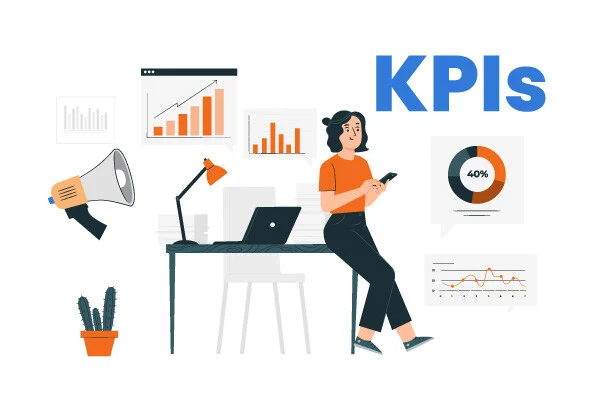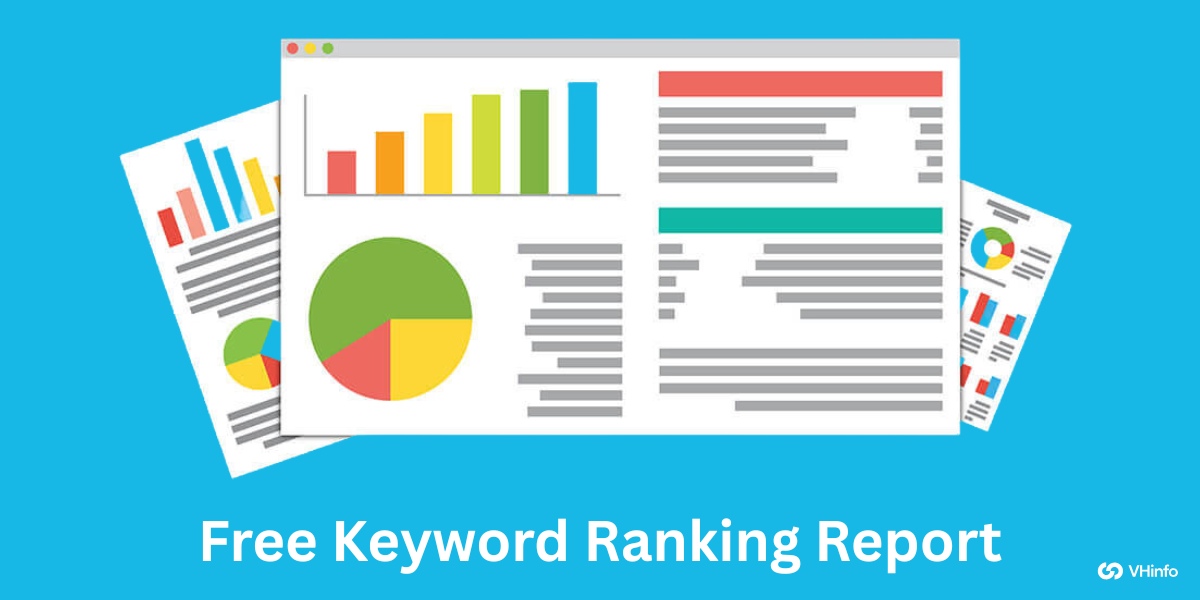In today’s digital age, standing out online is tougher than ever for financial services. With strict regulations, complex topics, and fierce competition, simply having an online presence and a website isn’t enough. That’s where SEO for financial services steps in.
A strategic approach to search engine optimization helps banks, credit unions, and financial advisors implement efficient digital marketing strategies that cut through the noise, boost online visibility, and connect with their target audience searching for everything from retirement planning to investment strategies.
Unlike generic SEO, financial services SEO demands a blend of technical SEO precision and high-trust content creation. Why?
Because when potential clients look up terms like “best mortgage rates” or “wealth management,” they’re not just browsing—they’re making life-changing decisions. Your site needs to rank high in search engine results while balancing user experience, local SEO for branch visibility, and E-E-A-T (Expertise, Authoritativeness, Trustworthiness) to meet Google’s strict standards.
This guide breaks down actionable SEO strategies tailored for the financial sector, helping you drive organic traffic, build brand awareness, and turn visitors into loyal clients. Let’s dive in.
What Is SEO For Financial Services?

SEO for financial services is the process of optimizing a financial institution’s website to improve its visibility in organic search engine results.
This specialized form of search engine optimization focuses on helping banks, credit unions, investment firms, and other financial service providers rank higher when potential clients search for relevant financial topics.
Unlike general SEO practices, financial services SEO must address the unique compliance requirements and trust factors critical in the financial sector. This includes demonstrating expertise and authority in financial content, maintaining strict accuracy standards, and ensuring secure user experiences.
Financial services SEO encompasses keyword research, technical SEO implementation, content creation, and link building strategies specifically tailored to meet the needs and expectations of financial audiences and search engines evaluating financial content.
What Are The Benefits Of Improving SEO For Financial Services?

Increased Traffic
Using good SEO strategies helps financial service companies show up in search results. This is for words that potential clients look for.
As your website moves up the search list, your traffic will grow. Financial firms with strong SEO can attract people looking for certain financial help. They can become the main source for these clients and build long-term financial ties.
Financial services SEO is a smart way to get visitors to your website without spending much money on ads. Paid ads need ongoing money to stay visible. In contrast, organic traffic keeps coming even when budgets are tight.
Better Conversions
SEO helps bring more visitors to your financial services website. It also helps turn these visitors into customers. Users find your site through search engines. These users are often looking for help related to your services.
This makes them more likely to become leads or customers. When financial sites rank higher in search results, they gain trust from potential buyers. This boost in trust, along with good content, helps create a better chance for sales.
Also, making SEO better usually means improving user experience and site speed. These things all help increase conversion rates.
Improved Branding
When your financial company shows up at the top of search results, it builds brand awareness and drives SEO success. This helps your business be seen as a leader in the field. When people trust your financial terms, they see you as a reliable source.
Good SEO makes your firm stand out in the finance world.
By making helpful content for common questions, you show your skills. This helps to earn trust from future clients even before they reach out. Better visibility and trust lead to stronger brand recognition in financial services.
How To Do SEO For Financial Services?

Use HTTPS
Implementing HTTPS is non-negotiable for financial services websites. This secure version of the standard HTTP protocol adds an essential layer of security to guard against malware and hackers – particularly critical when handling sensitive financial information.
Beyond security benefits, HTTPS is also a ranking factor that helps financial websites rank higher in search results.
Google explicitly favors secure sites, making this technical SEO element a baseline requirement for financial services SEO. Site visitors also recognize the padlock icon in browsers, providing an immediate trust signal for potential clients evaluating your financial services.
Build Content Around Your Specific Services
While broad financial topics have their place, your SEO strategy should focus on content specifically related to your service offerings.
If you’re a lender, create content addressing common lending questions. Credit unions should explain how their model differs from traditional banks. Financial advisors should outline their consultation process.
This targeted approach helps attract more relevant traffic to your website as part of your financial services SEO program.
People searching for specific financial solutions are more likely to convert than those looking for general information. Service-specific content also helps search engines better understand your financial institution’s specialties and relevance to particular queries.
Earn Authoritative Backlinks
Earning quality backlinks from reputable websites significantly improves your financial services SEO.
When authoritative financial or business sites link to your content, Google interprets this as a vote of confidence in your expertise. This directly impacts your search rankings for financial keywords.
For financial institutions, focus on obtaining links from respected sites within the financial services industry rather than pursuing quantity over quality.
One effective approach is identifying broken links on authoritative financial websites and suggesting your relevant content as a replacement. This provides value to the site owner while earning your institution a valuable backlink.
Optimize Your Page Load Times
Page speed is a critical ranking factor for financial websites. If your pages load too slowly, potential clients may abandon your site, increasing bounce rates and negatively impacting your search rankings. Financial services sites should aim for load times under three seconds.
Improving page speed involves optimizing images, using browser caching, minimizing code, and using a reliable hosting service.
For financial institutions, working with your web development team to implement these technical SEO improvements is essential for maintaining competitive search visibility.
Make Your Site Mobile-Friendly
Mobile optimization is essential as most financial services searches now occur on mobile devices. A responsive website design ensures your content displays properly across all screen sizes, providing a seamless user experience.
Google uses mobile-first indexing, meaning it primarily uses the mobile version of your site for ranking and indexing.
Financial institutions with non-mobile-friendly websites will struggle to rank well, regardless of other SEO efforts. Testing your site’s mobile performance should be a regular part of your financial services SEO maintenance.
Claim Your Google Business Profile
For financial institutions with physical locations, claiming and optimizing your Google Business Profile is important for local SEO. This free business listing appears in Google Search and Maps, helping potential clients find your branch locations.
Complete your profile with accurate information including your business name, address, phone number, website URL, business hours, and financial services offered. Regularly update this information and encourage satisfied clients to leave positive reviews, as these factors influence your local search rankings.
What Are The SEO Challenges Within Financial Services?

Increasingly Competitive Landscape
The financial services field is growing fast. New fintech companies and special software services are joining the market. They are working alongside traditional banks and firms. This change leads to strong competition for search visibility in finance.
To get noticed in search results, financial firms need to make great content. This content must meet the needs of clear target groups. Basic financial content is not enough anymore. Your work must show unique value and skill to compete well.
Increased Focus On SEO For Lead Generation
As more financial service firms see how SEO can help get good leads, the fight for top spots has grown.
Big Finance companies are spending a lot on SEO plans to catch the eye of potential clients. This trend shows that financial firms need to try harder to rank for important words. Just using simple SEO tricks won’t work anymore.
A full and steady plan for search engine optimization is needed to compete well in this tough market.
High Topic Complexity
Financial topics can be hard to understand. They often involve complex ideas that confuse many people. This makes it tough to write content. You want content that pleases search engines and your audience at the same time.
The special nature of financial topics means SEO teams have a task. They must fill the gap in knowledge. They should think ahead about questions and give clear answers while staying accurate.
This requires a lot of knowledge about the industry. It also needs good skills in making content.
It is not easy to combine these two in financial services.
Stricter Content Quality Requirements
Financial content is part of Google’s “Your Money Your Life” (YMYL) group within the financial services sector. This group faces tougher quality checks than other types of content. These pages affect readers’ money situations directly. Therefore, accuracy and trust are very important.
Being in the YMYL group means Google uses stricter rules for ranking. They focus on expertise, authoritativeness, and trustworthiness (E-E-A-T). Mistakes or false information can hurt your rankings a lot.
This makes careful fact-checking and strong editorial rules very important for SEO in financial services.
16 Proven Strategies For Implementing SEO For Financial Services

Check Your Current SEO
Before you start new SEO plans, check how your financial website is doing now. Use tools like Google Search Console.
Also, use Google Analytics to find your site’s strengths and weaknesses. Look at your current keyword rankings. Check the trends in organic traffic and any technical SEO stats. This review will help you decide what to improve first.
It will also let you see how well your SEO efforts are working over time.
Build Trust and Topical Authority
Financial choices need a lot of trust. You can build trust by sharing clear and accurate content.
This content should show your skill in financial subjects. Use clear E-E-A-T signals on your website. This means you should include detailed author bios that show their financial skills.
Also, cite good sources and share any industry certificates or memberships.
Perform A Content Audit
Look at your current content to find ways to make it better. Check which financial topics do well and which ones need work. Get rid of old financial info and update it. Combine similar content to make it clearer. Find missing pieces in your financial services library.
This will help make sure all your content is up to date and meets the needs of your audience.
Understand Your Target Audience
Create clear profiles of your real customers. Use surveys to find out their needs and wants.
This includes their problems, preferred words, and the financial help they want. Doing this research helps you make content that speaks to future clients. It also meets their specific money issues. This can boost how much they engage with you and improve sales rates.
Earn Reputable External Links Through Link-Building
Develop a strategic approach to acquiring backlinks from authoritative financial websites.
Quality backlinks signal to search engines that your content is trustworthy and authoritative. Focus on creating linkable assets such as original research, financial tools, or comprehensive guides that naturally attract links from other financial websites.
Do Your Keyword Research
Identify the specific terms your target audience uses when searching for financial services. Look beyond obvious and relevant keywords to find long-tail variations that indicate higher search intent. Financial services SEO should focus on relevance over keyword density.
Research shows top-ranking financial pages often contain target keywords just once, prioritizing context and value instead.
Make A Competitor Analysis
Analyze competitors’ SEO strategies to identify opportunities and gaps.
Examine their top-performing content, backlink profiles, and keyword targets. Remember that your SEO competitors include not just direct business rivals but also financial blogs, media companies, and other content publishers competing for the same search visibility.
Create Educational Content For Your Users
Develop helpful resources that address common financial questions and concerns.
Educational content establishes your authority while providing genuine value to potential clients. Focus on creating comprehensive guides, explanatory articles, and practical tools that help users better understand complex financial topics relevant to your services.
Improve Your E-A-T
Enhance your Experience, Expertise, Authoritativeness, and Trustworthiness signals throughout your website.
For YMYL financial content, these factors significantly impact search rankings. Demonstrate experience through case studies and client success stories. Showcase expertise via staff credentials and detailed, accurate content.
Build authority through industry recognition and trustworthiness via security certifications and transparent policies.
Check Your Technical SEO
Ensure your website’s technical foundation supports your content efforts.
Technical SEO issues can undermine even the best financial content strategy. Regular technical audits should address site structure, crawlability, indexing issues, and schema markup implementation specific to financial services.
Focus On Speed and Mobile Optimization
Optimize your website for fast loading and seamless mobile experience.
Page speed directly impacts both user experience and search rankings. Implement responsive design, compress images, minimize code, and use browser caching to improve performance across all devices.
Identify New Opportunities Through Keyword Research
Continuously expand your keyword research to discover emerging financial topics and questions.
Tools like Google’s “People Also Ask“ sections can reveal valuable content opportunities. Look beyond transaction-focused keywords to include informational queries that attract potential clients earlier in their financial decision-making process.
Find Your Main Organic Competitors
Find the websites that often rank for your keywords. These sites might not be your direct rivals.
Still, they are your SEO rivals. Look at their content plans. See how they get links to their sites. Check their technical setup as well. This can help you create your own SEO plan for financial services.
Improve Your Local SEO
For financial institutions with physical locations, local SEO drives branch visits.
Optimize your Google Business Profile with accurate information and encourage client reviews. Create location-specific pages for each branch, including local keywords and providing specific information valuable to local clients.
Optimise Technical Aspects Of Your Website
Address technical SEO fundamentals including site architecture, XML sitemaps, robots.txt configuration, and proper use of redirects.
Implement schema markup specific to financial services to help search engines better understand your content and potentially gain rich snippets in search results.
Track and Improve Your Off-Page SEO
Monitor your backlink profile, online mentions, and social media signals.
Off-page factors significantly impact how search engines evaluate your site’s authority. Develop a proactive strategy for building quality links through content outreach, financial industry directories, and partnership opportunities.
SEO KPIs For Financial Services

Effective financial services SEO requires tracking the right key performance indicators (KPIs) to measure success and guide optimization efforts. Focus on metrics that directly relate to business objectives rather than vanity metrics.
Primary KPIs should include organic conversions (tracking users from organic search who complete desired actions), search visibility (measuring how often your site appears for target financial keywords), keyword rankings (monitoring position changes for strategic terms), and organic click-through rates (showing the percentage of searchers who click your results).
Also track technical SEO metrics like page speed, mobile usability, and crawl statistics. For local financial institutions, monitor local pack appearances and Google Business Profile engagement metrics.
How To Implement Financial Services SEO That Gets Results?

- Base Your SEO Content Strategy On Customer Research: Develop quality content that directly addresses real questions and concerns from your target audience. Use customer surveys, service team feedback, and search query analysis to identify topics that matter to potential clients. This research-based approach ensures your content resonates with real financial concerns rather than assumptions about what clients want to know.
- Create Content For the Level of Your Reader: Adjust your content complexity based on your target audience’s financial literacy. Some topics require simplification while others benefit from technical depth. Balance accessibility with accuracy, ensuring content is understandable without oversimplifying complex financial concepts that could mislead readers.
- Create Content Based on Interviews With Experts: Use your internal financial experts to create authoritative content. Expert interviews provide unique insights while strengthening your E-E-A-T signals. This approach adds credibility to your content while ensuring technical accuracy on complex financial topics.
- Track the Results of Your Content: Implement comprehensive analytics to measure each content piece’s performance. Track not just traffic but engagement metrics and conversion actions. Use these insights to refine your content strategy, doubling down on formats and topics that drive meaningful business results.
FAQ’s:
What Is The Role of E-E-A-T in Financial Services SEO?
E-E-A-T (Experience, Expertise, Authoritativeness, and Trustworthiness) is particularly important for financial services SEO because financial content falls under Google’s YMYL (Your Money Your Life) classification.
Google holds this content to higher standards because inaccurate information could negatively impact readers’ financial wellbeing.
For financial websites, demonstrating E-E-A-T involves showcasing author credentials, citing reputable sources, providing comprehensive, accurate information, and maintaining a secure website with proper certifications.
These signals help Google recognize your content as trustworthy, directly impacting your search rankings for financial terms.
How Does Local SEO Benefit Financial Institutions?
Local SEO helps financial institutions appear prominently when potential clients search for services in their area. This visibility is important as many financial decisions still involve in-person consultations or branch visits.
Key local SEO elements include optimizing Google Business Profiles with accurate information (name, address, phone number, hours), creating location-specific website content, and generating positive client reviews.
These strategies help financial institutions appear in local map packs and location-based searches, driving both website traffic and physical branch visits.
How Long Does It Take To See Results From SEO For Financial Services?
Most financial institutions begin seeing initial SEO improvements within 3-6 months of consistent implementation, though significant results typically take 7-12 months to materialize.
The timeline depends on several factors, including your website’s current authority, competitive landscape, and implementation quality.
By month four, you should notice early traction with improvements in keyword rankings and organic traffic. Between months 7-12, these efforts compound as your site gains authority, often creating an inflection point where traffic and conversions increase more rapidly.
Financial services SEO requires patience but delivers long-term value.
Can SEO Improve My Financial Service’s Local Visibility?
Yes, SEO can significantly enhance your financial institution’s local visibility through targeted local SEO strategies.
Optimizing your Google My Business profile, creating location-specific website content, and building local citations all help your business appear in local search results.
For financial services with physical locations, local SEO drives both online visibility and in-person visits. Research shows that many consumers search online before visiting financial institutions, making local search optimization essential for branch-based businesses.
Is SEO Worth The Investment For Small Financial Firms?
SEO provides substantial ROI for small financial firms when implemented strategically. While it requires upfront investment and ongoing maintenance, effective SEO delivers sustained traffic without the recurring costs of paid advertising.
Small financial businesses benefit from SEO’s ability to level the playing field with larger competitors.
By focusing on specific niche services or local markets, smaller firms can achieve strong visibility for targeted & specific keywords, attracting highly relevant prospects at a lower cost per acquisition than many other content marketing channels.
How Does Google’s E-A-T Principle Apply To Financial Services SEO?
Google’s E-A-T principle (now E-E-A-T with the addition of Experience) directly impacts how financial content is evaluated. As YMYL content, financial services websites face heightened scrutiny regarding the expertise, authoritativeness, and trustworthiness of their content.
Financial institutions should implement clear E-E-A-T signals, including detailed author biographies with financial credentials, citations from reputable sources, comprehensive, accurate information, and technical trust signals like secure connections and privacy policies. These elements help search engines recognize your content as reliable and authoritative, directly influencing your rankings for financial keywords.
Conclusion
SEO for financial services requires a specialized approach that addresses the unique challenges and opportunities in this highly regulated sector. By implementing the strategies outlined in this guide—from technical optimization to content creation and authority building—financial institutions can improve their online visibility and implement powerful financial SEO tactics to attract more qualified leads.
Successful financial services SEO balances technical excellence with content quality and user experience. Focus on building trust through E-E-A-T signals, creating valuable content that addresses real client needs, and maintaining a secure, fast website experience.
SEO is a long-term investment. It builds returns over time. You might see some gains in 3 to 6 months. However, the best results usually come after 7 to 12 months. This happens when you keep working at it consistently.
For financial institutions willing to make this investment, the reward is a sustainable source of qualified leads and enhanced brand authority in an increasingly competitive digital landscape.
At VH-info, our specialized approach to SEO for financial services has helped numerous clients achieve page one rankings for competitive financial terms.
Our team understands the unique requirements of financial content and can develop a tailored strategy for your specific institution.
Contact us today to learn how we can help improve your financial services SEO performance.


